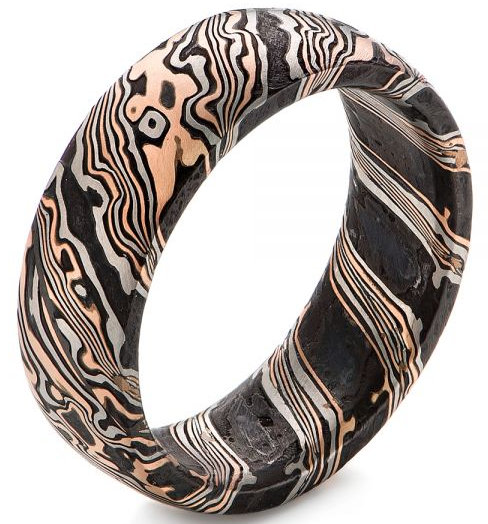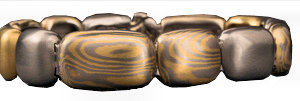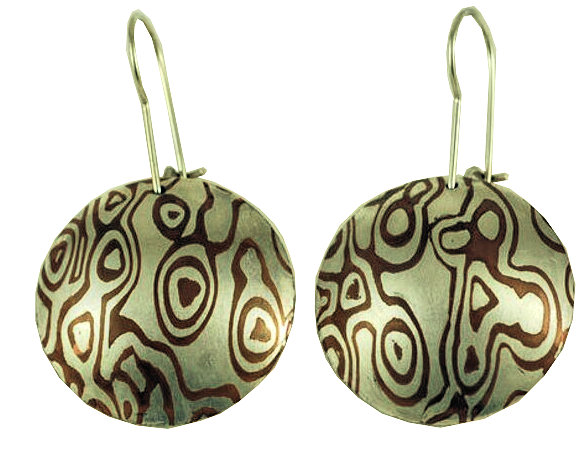Are you ready to learn about the coolest metalworking technique ever? Let me introduce you to Mokume Gane! This Japanese technique involves fusing layers of different metals together to create a single piece that looks like wood grain. It’s like magic, but with metal.
The process starts with layering metals like silver and copper, then cutting and flattening the piece over and over again to create intricate patterns. The end result is a one-of-a-kind piece that’s not only beautiful but also durable.
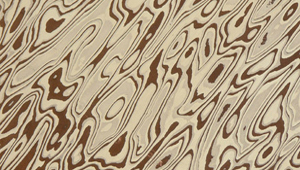
Sheet of Mokume Gane made from Silver and Copper
History of Mokume Gane
The mokume gane technique was invented in 17th century Japan by a master artisan named Denbei Shoami. He developed the technique to replicate the wood grain pattern on a Samurai sword handle. The technique was used mainly for the creation of Samurai sword hilts before it was adopted for jewelry making.

Mokume Gane Hand Guard for a Sword
In Japan, knowledge of the technique was passed from master to apprentice. The West “discovered” the technique in the late 1800s. When Japan opened trade with the West in the late 1800s, some mokume gane pieces were exported. Inspired, Edward Moore, Tiffany’s artistic director, began creating mokume around 1877.

Edward C. Moore, Tiffany’s Artistic Director in the Late 1800s
At the Paris exposition of 1878, Tiffany’s won the grand prize with a spectacular mokume gane vase. Moore continued to develop mokume gane techniques in preparation for the Paris exposition of 1889, where it displayed more mokume gane. All of Tiffany’s mokume was solder-laminated rather than fused.
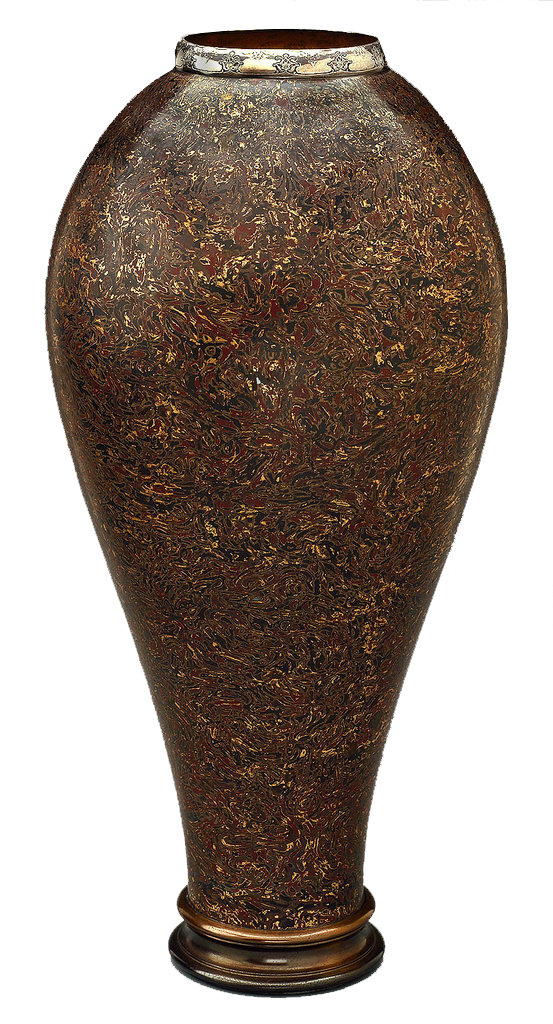
Tiffany Mokume Gane Vase from the 1878 Paris Exhibition
Fast forward to 1970, when Hiroko Sato Pijanowski and Eugene Michael Pijanowski attended an exhibition of traditional Japanese craft and saw a large raised Mokume Gane piece. They were so intrigued that they learned the technique and brought it to the United States.The Pijanowskis were taught mokume gane by the Japanese artists Gyokumei Shindo, Masahisa Yagihara, and Norio Tamagawa.

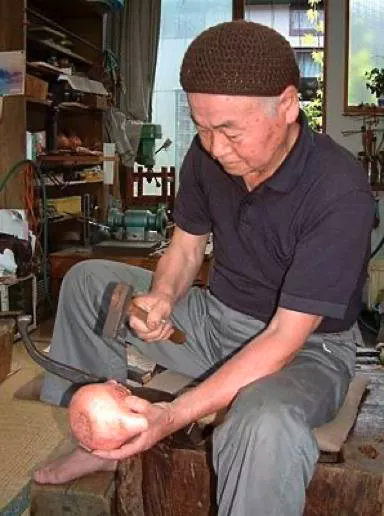
Hiroko Sato Pianowski Norio Tamagawa
The Pijanowskis and their students were like mad scientists in the lab. They experimented with alloys, firing techniques, and patterning methods. Marvin Jensen who really made the technique widely available with his bolted plate invention. It held sheets of metal in place during fusing. And let’s not forget the new kiln designs that followed – talk about innovation!
Contemporary Mokume Gane
Today, contemporary jewelers still use this ancient technique to create jaw-dropping pieces of jewelry with a modern twist. From rings to pendants to earrings, mokume gane is all the rage. And if you’re feeling fancy, there are even limited edition mokume gane watches to add to your collection.
Caring for Mokume Gane
If you want your mokume gane jewelry to last a lifetime (or two), you gotta take care of it. Keep it in a dry, cool place and steer clear of extreme temperatures and harsh chemicals. When it’s time to clean it, use a gentle touch with a soft cloth and mild soap and water. Or, if you’re feeling fancy (again), take it to a professional jeweler for a good polishing.
Mokume Gane Style
Now, let’s talk style. Whether you’re into nature-inspired designs, geometric shapes, or abstract art, mokume gane has got you covered. It’s the perfect addition to any jewelry collection, whether you’re looking for a timeless classic or a bold statement piece. So go ahead, explore the world of mokume gane – your jewelry box will thank you.
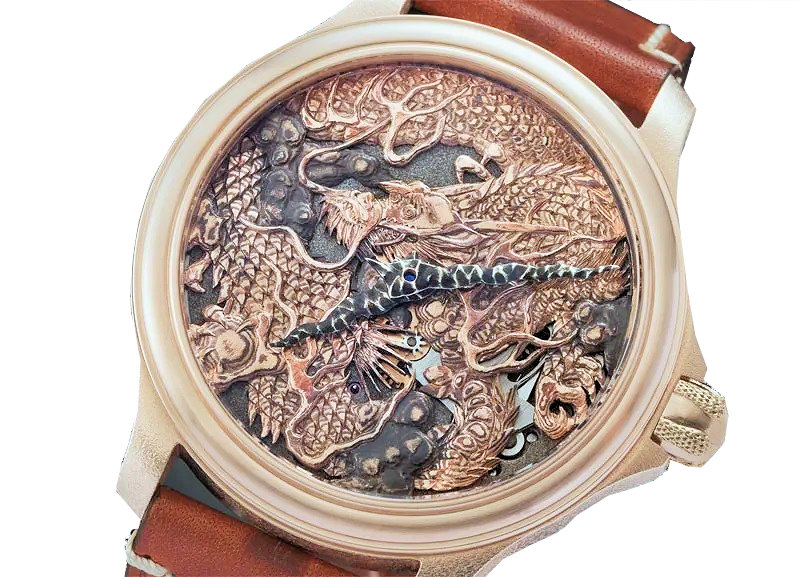
Watch with Mokume Gane Face by Kees Engelbarts
